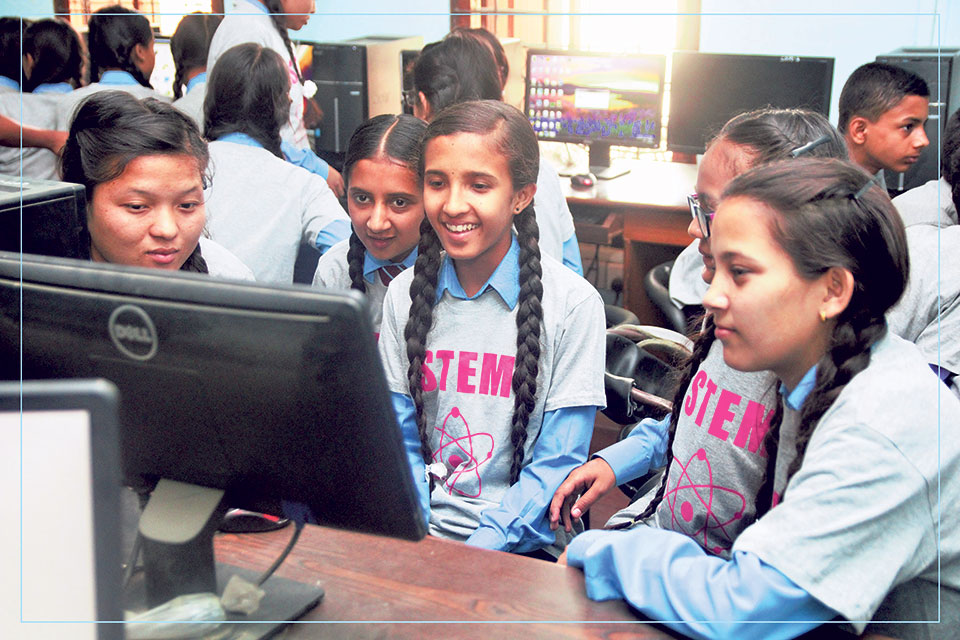Celebrating local craft in Jewelries
5 years ago

5 years ago

6 years ago

6 years ago

6 years ago

6 years ago

Though there might be a negligible number of girl students taking computer or technical subjects, it is even rare to find them making a career out of such fields. Pratiksha Pandey and Binita Shrestha are two among that relatively small population of women who not only survived the four years of their engineering but are also working in the field.

Pandey was doing her Electronics and Communication Engineering degree when she met Shrestha at Nepal College of Information Technology (NCIT), who was doing IT engineering there. Both shared and discussed the minimum participation of girls in their respective classrooms; there were two other girls in Pandey’s class, while Shrestha was the only girl in her class.
Pandey had always thought of doing something in the engineering field, but even with a family full of engineers she didn’t receive the right support from her family or relatives to pursue engineering. Her family wanted her to become a doctor, but her passion eventually guided her to join engineering. While for Shrestha, engineering was always a fancy subject. When she stepped into the class the very first day, she wanted to quit seeing a classroom full of boys, she used to avoid going to class as much as she could yet always secured high marks in exams.
“We enrolled knowing the scenario, but we often felt secluded and alone. We often felt demotivated and thoughts of quitting often reeled at the back of our heads. But we fought all our fears, our inhibitions and graduated proudly. But those years made us question why there were null or less female participation in engineering classrooms and more in nursing or management. Our answer lied in societal barriers and stereotypes that have been imposed upon girls and the lack of encouragement in their early age. We also got to know even the girls who were already enrolled were not clear about scopes and future of the field,” said the duo.
When the problem became clear to them, they decided to encourage women like them to make their careers in this field. They started with a workshop (Hour of Code) in JavaScript on December 2015 and called in girls from their college to participate. Even though the first session didn’t go well and participation was low, their second session saw double the participation. And by the time they conducted our third session, through the word-of-mouth and their marketing, it was sought after by many and saw the participation of more than 100 people.
“Sessions by sessions, we started getting the same faces and we saw that the situation was not exactly changing as the ratio of girls in bachelor’s level was still the same. With further research, we shifted our focus from undergrad students to school students. In October 2016, we co-founded Women In STEM (Science, Technology, Engineering and Mathematics) or WISTEM, and started approaching schools for the classes,” said Shrestha. However, they shared that the schools were not welcoming enough. Government schools were even more difficult to approach and even private schools didn’t show readiness to start the classes right away.
WISTEM currently works with children between 10-16 years and conducts basic level classes focusing on three sections; design thinking, robotics and game development. They run on weekends or after school with girl to boy ratio of 60: 40 and teach them how to make games and where to apply theories and principles they have learned in class. The course is also available in advanced level. The basic course is 15-hours-long, while the advanced course is 33 hours.
“Our motive was to bridge the school education to the real world so that they can associate them in real time for better academic performances. Students have started questioning without hesitation and are prone to experiment and research in class. The class is very liberal yet when we see them integrating logics and principles to explain what they are doing or developing in our sessions, it brings a smile to our faces to know that they are learning and getting encouraged,” said Pandey.
While it is too soon to tell if the results would be like they expected and if girls would start pursuing their higher education in the STEM field, both of them are hopeful that the future will bear the desired results based on the progress made to this day.
For more effective results, they have decided to give their full time to WISTEM and plan to approach more government schools in 2018 and close the gap found among students’ understanding. They also plan to focus more on issues of cybercrime and cyber security. Currently, they are hopping from a co-working space to another, but by 2018 they plan to open space of their own a lab that would be open for all.
Leave A Comment